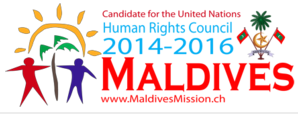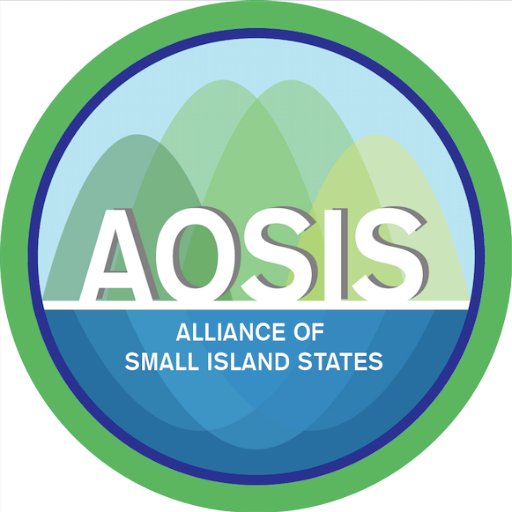Statement by
The Republic of Maldives
on behalf of the Alliance of Small Island States (AOSIS)
at the Session on SDGs and targets for the Intergovernmental Negotiations on the post-2015 development agenda
23 March 2015
Co-Facilitators,
I have the honour to speak on behalf of the Alliance of Small Island States (AOSIS). We align ourselves with the statement delivered by the distinguished Permanent Representative of South Africa on behalf of G77 and China.
At the outset, allow me to join others in commending you for your continued remarkable leadership in this ambitious and inspiring intergovernmental process. I would also like to use this opportunity to thank the Statistical Commission and all national statistical offices around the world for their efforts in working on a set of indicative indicators for us to discuss this week.
Co-facilitators,
As we have repeatedly indicated, we believe that the Report of the OWG on the Sustainable Development Goals, as highlighted in GA Resolution 68/309, serves as the basis for integrating sustainable development goals into the post-2015 development agenda. It sets out an ambitious agenda for sustainable development over the coming decades and reflects the common consensus of Member States.
We therefore do not support reopening, reorganizing, and renegotiating this text and ask all parties to respect the party-driven process that has gotten us this far and took a year and a half to be completed. We need to focus on the way forward.
AOSIS cautions against the rearrangement of goals and targets. While we agree that it is important to cultivate ownership of the agenda by all stakeholders, rearranging the current 17 SDGs into themes can alter the visibility and importance of certain goals and their targets. Poverty eradication and achieving sustainable development are what we are setting out to do; and all of these 17 goals and their targets will make sure to lead us there.
We also stress that the means of implementation identified under each and every SDG and in SDG 17 are an essential component of the SDGs and without prejudice to the integrity of the Monterrey and Doha frameworks for FfD.
Co-facilitators,
Our discussions this week should focus on indicators. For AOSIS, our intergovernmental discussions should focus on a set of global indicators that reflect and respect the equilibrium of the OWG report. National governments will be responsible for determining their sets of national indicators; and where applicable, regional indicators may be elaborated by relevant regional organizations.
We have before us a proposal by the Statistical Commission, which was “rated” by 70 countries and compounded by a methodology set by the Commission. We understand and have noted the Statistical Commission’s warning against the quality of the proposed indicators due to the limited time available to elaborate indicators and consult effectively with NSOs. From their report, the assessment is clear: there is a lot that needs to be done to elaborate an adequate set of indicators that does not undermine what was achieved in the Open Working Group last year. Allow me to express AOSIS members’ views on indicators.
First many of these indicative indicators proposed by the Statistical Commission cannot be currently measured by our national or regional statisticians and are likely to increase the burden on our statistical offices. SIDS require a set of indicators that better reflect our vulnerability which can be based on SIDS’ national statistics and development indicators, where available. Indicators should not constitute an additional burden to statistical offices in developing countries, in particular SIDS.
In addition, given our special circumstances and structural vulnerabilities, we need to develop alternative measures for assessing progress. We should take this opportunity to re-define a new way of thinking about development: one that takes into account particular vulnerabilities and resilience of all countries more holistically.
Bearing in mind small NSOs and their limited capacity, our preference would be for a smaller number of indicators. To limit the number of indicators and show the inter-linkages between goals and targets, one option would be to provide indicators that can measure progress on several targets.
We are also very concerned by the relative imbalance in the choices of indicators as well as the rating method applied. Again, the time constraints may have explained the relatively small number of respondents, but the methodology to compound these views may skew the results.
Co-facilitators,
Again, let me reiterate that we are aware of the severe time constraints under which we are to adopt a decent and adequate set of global indicators. We sympathize with the concerns of the Statistical Commission in particular since we, as SIDS, experience them in many areas and on a daily basis. Our own statisticians have raised deep concern over the tight timeline that was set.
We note the proposal by the Statistical Commission to finalize a set of indicators at their next meeting, a year from now. We have heard their rationale and understand it. At the same time, we cannot foresee our leaders adopting an incomplete agenda. The follow-up process should be based on strong indicators that open room for reinterpretation of the SDG political equilibrium. Indicators are crucial in maintaining that balance reached in the OWG report on SDGs throughout the implementation of the agenda. They need to be an integral part of it. Adopting them after the Summit may be prejudicial and may undermine our agreed outcome. Therefore any decision we take on the timeline must follow a thorough consideration from all angles.
Co-facilitators,
The issues that statisticians have faced, and many from SIDS, remind us that there is a persisting data gap, and filling it is crucial for the process we are defining now. A data revolution in SIDS is required to enable effective follow-up of implementation of our agenda. Partnerships and support will be critical to bring about this necessary data revolution. We look forward to continued discussions on this matter in this process and leading to Addis Ababa, as well as in the follow-up of the implementation of the SAMOA pathway.
Thank you.



